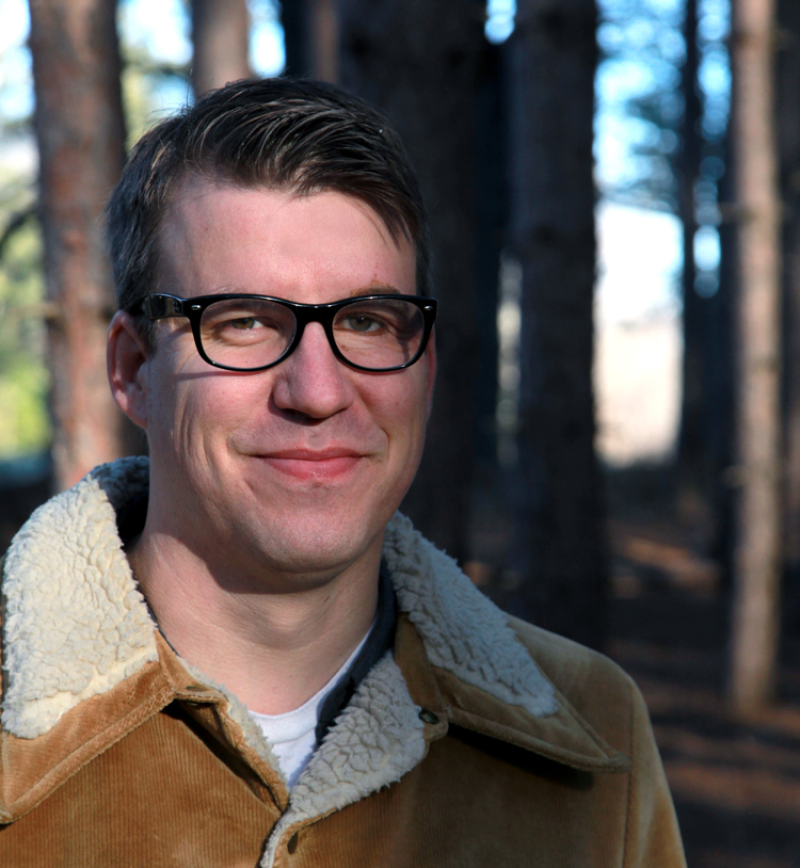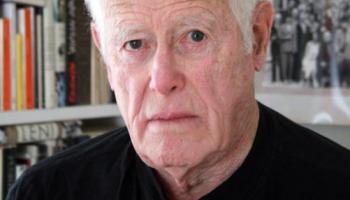A ‘Burst of Fresh and Radical New Energy’

This is an exciting time for the Department of English’s Creative Writing Program. Long considered one of the top creative writing programs in the country, it is adding to its talented faculty roster for the first time in five years. Award-winning fiction writer Kevin Moffett joined the program’s faculty this fall as an assistant professor, and Jesse Ball, a critically acclaimed writer, whose fabulist and absurdist work includes more than 20 books of short and long fiction, verse and drawings, is spending the fall semester on Grounds as the 2023 Kapnick Distinguished Visiting Writer.
Recently, the Creative Writing Program also received approval to add a new tenure-track professor of poetry.
“We couldn’t be more delighted to welcome Kevin Moffett in the same term that we host Jesse Ball,” said Jane Alison, professor of creative writing. “The presence of two such innovative writers signals an exciting weather change in the Creative Writing Program. After a few lean years for the program, it is extremely inspiring to have this burst of fresh and radical new energy.”
The Creative Writing Program is hosting a 4:30 p.m. reading by Moffett on Oct. 27 in the English Faculty Lounge.
As a writer, Moffett is interested in formal experimentation, oral histories and the short story. His most recent book, The Silent History, written and designed in collaboration with Eli Horowitz and Matthew Derby, debuted as a serialized digital narrative for mobile devices. The core narrative is supplemented by over 400 location-specific entries that can only be accessed at various sites around the world. In its review of the novel’s bold storytelling experiment, The New York Times wrote, “This fascinating project manages to feel relentlessly thoughtful and new.”
Earlier this semester, A&S Communications caught up with Moffett to ask him about what led him to join the Creative Writing Program’s faculty, his thoughts on how to engage with contemporary readers and his approach in the classroom with young, aspiring writers.
Q: What are some of the specific factors that led you to accept a faculty position with the College’s Creative Writing Program?
KM: More than anything, it was the prospect of joining a venerable and flourishing MFA program, combined with teaching in and cultivating the undergraduate creative writing concentration in prose. I’m really looking forward to working with students at all levels of their apprenticeship as writers, from those interested in fiction writing who maybe haven’t written creatively since before high school, to graduate students finishing drafts of their novels and short story collections.
Q: Your work has been widely praised for its experimentation and departure from traditional storytelling forms for a novelist. What do you see as the role of — or the challenges facing — a contemporary fiction writer trying to engage with today’s readers?
KM: Samuel Beckett said, “To find a form that accommodates the mess, that is the task of the artist now.” He said this 60 years ago. For me, whether I’m collaborating or not, writing a short story or a scripted podcast, the challenge is always the same: unearthing the next word, and then the next. Stumbling upon the sentence that makes the next thousand sentences plausible.
Q: Given your own path as a writer, what is your approach to teaching aspiring novelists and fiction writers?
One of my favorite professors in college underlined a single three-word phrase in a story of mine and wrote something to the effect of: “This is the only thing in your story worth salvaging.”
While I found this hugely instructive, over the years I’ve learned that what worked for me as a student doesn’t necessarily work for my students. So, I’ve developed a more ad hoc approach. Some students need generative exercises. Some don’t. Some respond to published work that expands or upends their notion of what a story can “do.” Others just need firm deadlines and granular edits. Beyond that, I want the classroom to be a supportive, productive space where students feel like there’s lots of room for their voice, both creatively and critically.
Q: Tell us about the “Adaptation” course in creative writing you’re teaching this semester.
The Adaptation class is a kind of apotheosis of my current interests as a writer and teacher. Students will be adapting fairytales and folktales and news stories into various forms, including short stories, screenplays, podcasts, and visual narratives. And then adapting their adaptations, thinking about how the original stories survive and mutate. I’m really interested in seeing how students adjust to the possibilities and limitations in genres that may or may not be familiar to them.









